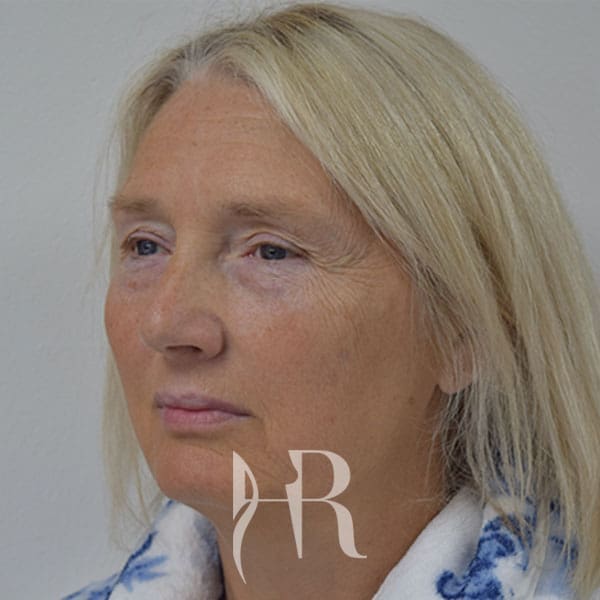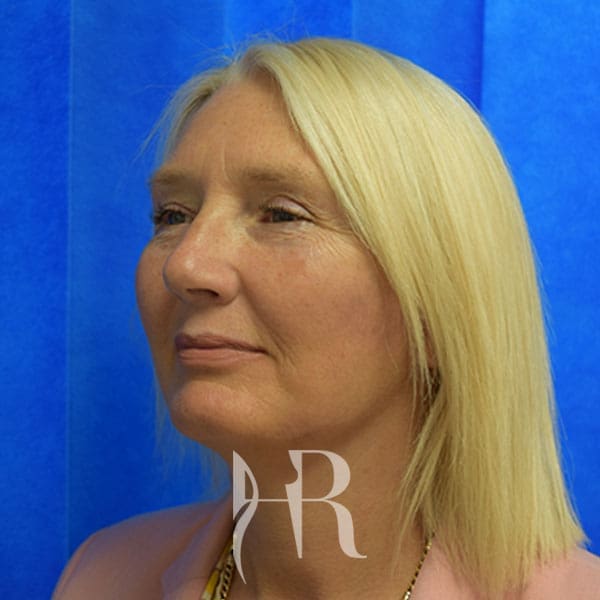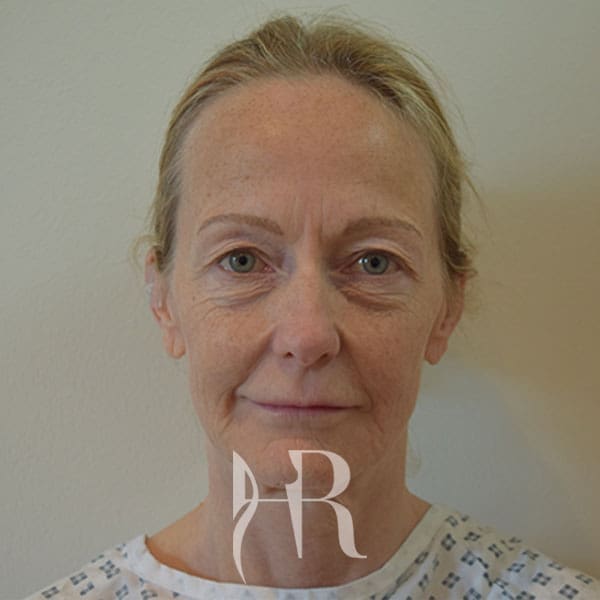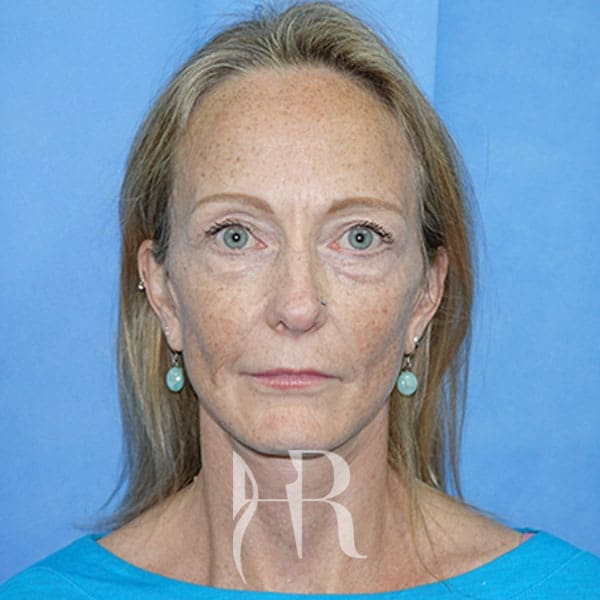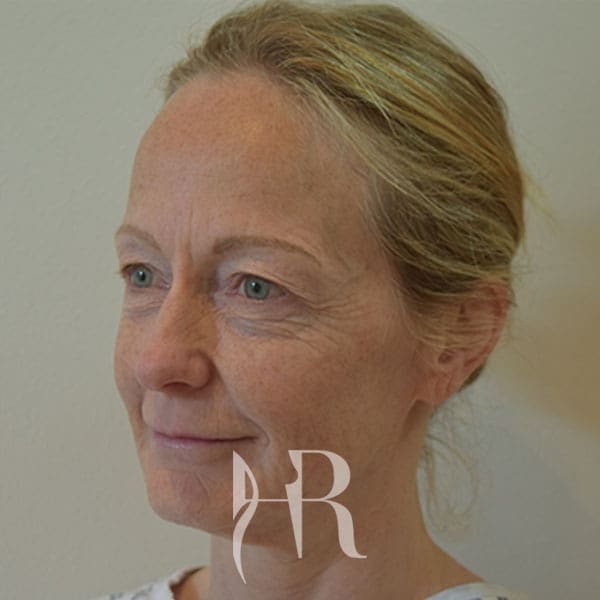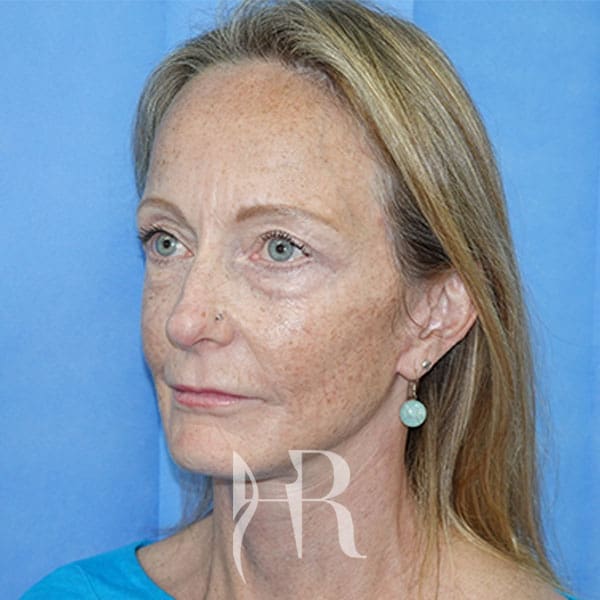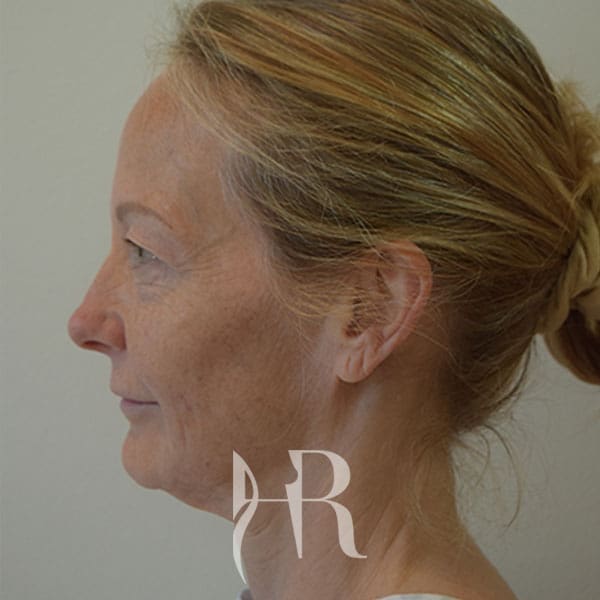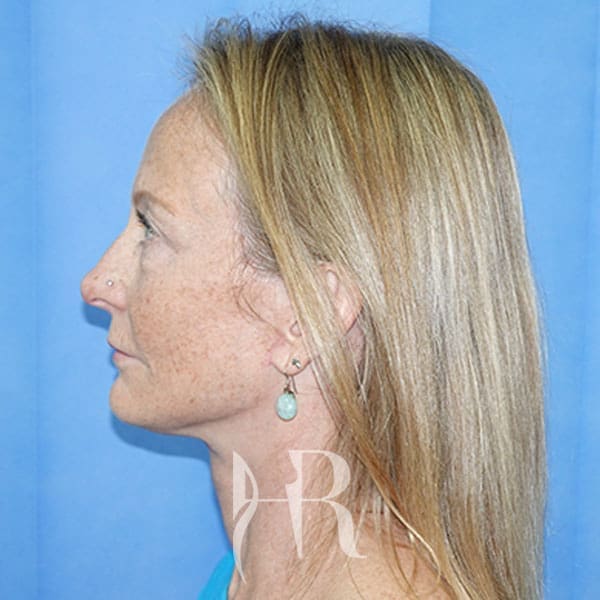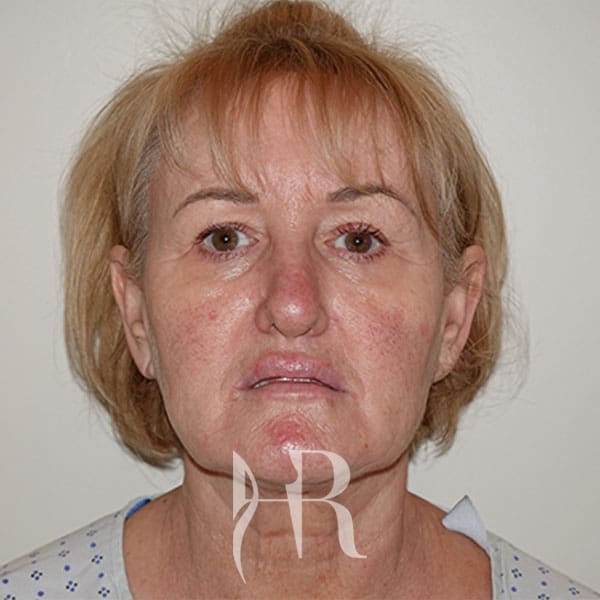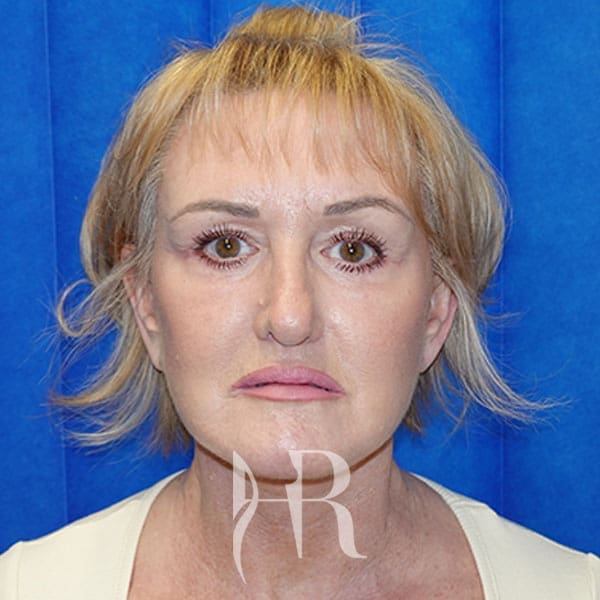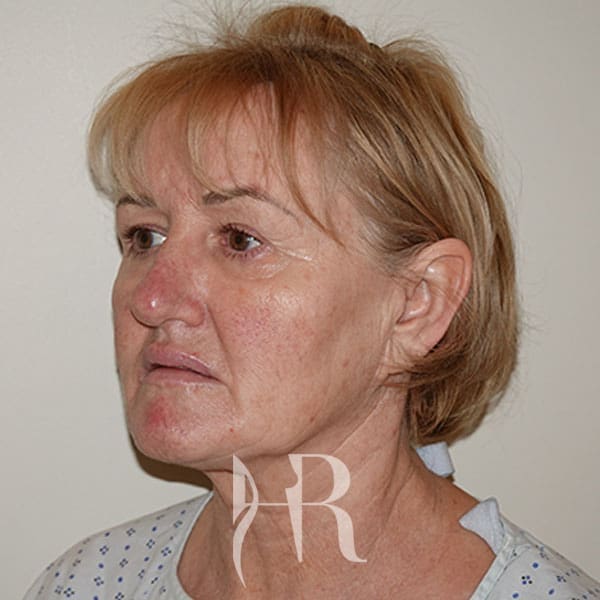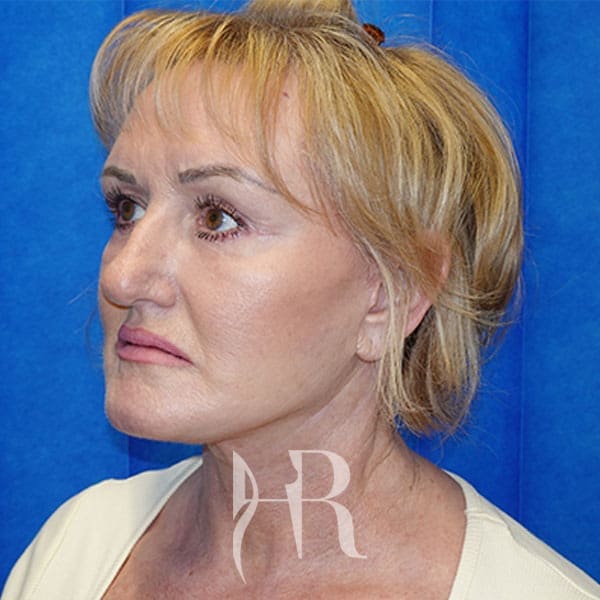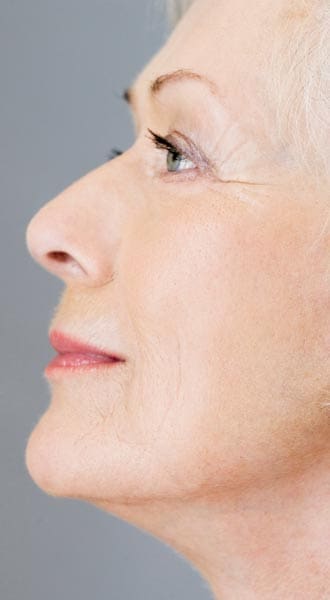Facelift surgery, also known as rhytidectomy, has helped many regain their youthful appearance. With almost 2 million facelifts performed globally every year, it’s the gold standard if you are looking to reclaim a youthful look. At HR Plastic Surgery we perform the latest and safest techniques in facial rejuvenation procedures.

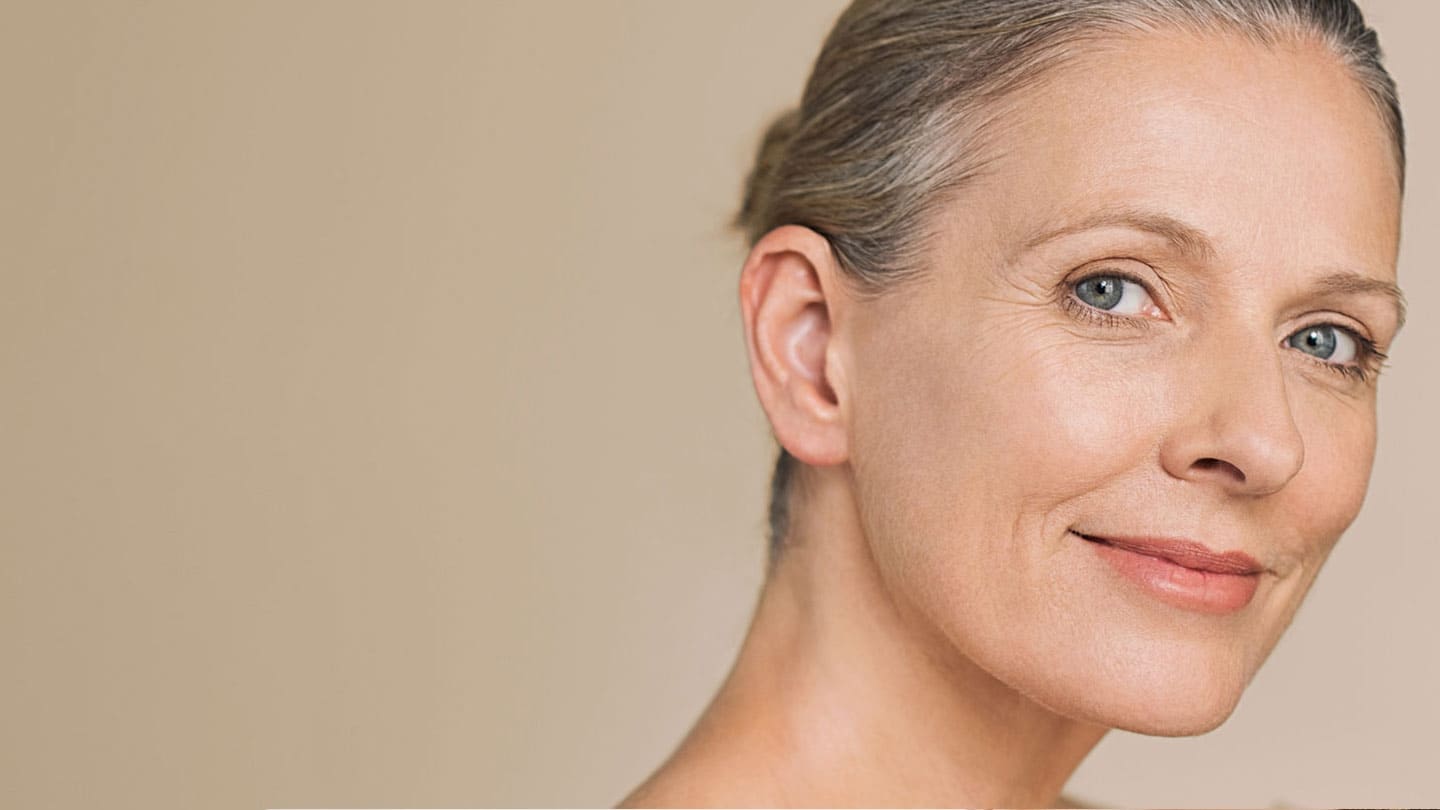
Facelift (Rhytidectomy)
Facelift Surgery tightens face and neck muscles and tissues and repositions the skin for a more youthful and rejuvenated appearance.
At a Glance
Surgery time
4 hours
Anaesthesia
General anaesthetic
Hospital stay
Overnight stay
Recovery
2 weeks scar healing; 6 weeks total recovery

What is a Facelift
Facelift surgery, also known as rhytidectomy, is a cosmetic procedure aimed at reversing the visible signs of ageing on the face and neck. It involves the lifting and tightening of facial muscles and tissues and the removal of excess skin to create a more youthful and rejuvenated appearance.
It effectively addresses issues such as sagging skin, fine and deep wrinkles and abnormal contours such as jowls and deep folds, to restore a firmer, smoother, and more youthful contour to the face and neck.
There are different types of surgical facelifts, distinguished either by the length of the scar (short scar mini facelift or a MACS lift) or by the way the deeper facial tissue is repositioned (SMAS or deep plane facelift). Facelift surgery is highly customisable, allowing surgeons to tailor the procedure to your unique needs and aesthetic goals for natural-looking, long-lasting results.

Understanding the procedure, the risks and potential life-changing benefits can make you feel more confident about your decision to proceed with surgery. This guide helps you explore key aspects in facelift surgery.
Reasons to choose
Many people who are unhappy with the effect of ageing on their face and neck and have developed features such as jowl formation and sagging skin with loss of contour of their neck and jawline, choose to have facelift to restore a more youthful look.
Benefits
The main benefits of the procedure are restoration of a more youthful appearance and increased self confidence.
Removal and tightening of excess skin caused by ageing or substantial weight loss, smooths out wrinkles and improves the overall quality of the skin by correcting the contour deficits and irregularities resulting in a healthier appearance. The latest techniques provide a natural-looking long lasting enhancement rather than an artificial “pulled” appearance.
Risks
It’s essential to be aware of the potential risks associated with facelift surgery, although complications are relatively rare.
These risks may include:
- Infection: As with any surgical procedure, there is a slight risk of infection.
- Scarring: Scars are kept to a minimum and made discrete by placement in well-hidden areas.
- Bruising and swelling: Temporary bruising and swelling are common after a facelift.
- Numbness: Some patients may experience temporary numbness in the treated areas.

Who is a good candidate?
A good candidate for facelift surgery is someone who has signs of facial aging and is unhappy with their appearance. It’s important to be;


Physically Healthy
A Non-smoker

Book a Consultation
Take the first step toward your ideal look by booking a consultation with our expert surgeon.


Understanding what a facelift involves, can help you feel more confident and prepared for your journey. The procedure is carefully planned to achieve the results you desire, whilst keeping your safety and comfort paramount. From your initial consultation to recovery, each step is designed to offer a smooth experience. We outline below what you can expect from the process.
Consultation
A comprehensive consultation with our plastic surgeon, Mr Hyder Ridha is the initial step. During this consultation, Mr Ridha will evaluate your facial anatomy, discuss your aesthetic goals, and assess your overall health to determine your suitability. He’ll then select the best type of facelift technique for you. Based on this assessment, a personalised treatment plan will be created, outlining the specific areas of concern and the surgical techniques to be used.
Procedure
Depending on the type of facelift (mini or full facelift) to be performed, the procedure is performed under a general or local anaesthetic.
Discrete incisions are made around the ear and extend slightly into the hairline in the temple and behind the ear.
The skin is elevated to give access to the SMAS (Superficial MusculoAponuerotic System) layer which is a continuous layer of fibrous and muscle tissue connecting the underlying facial muscles to the skin.
The principle in all the different types of facelift, such as a High SMAS or Deep Plane, is to elevate and tighten the SMAS layer to achieve facial rejuvenation.
The excess skin is removed, the incisions are closed meticulously and dressings and a facial garment are applied.
In the immediate postoperative period you will be closely monitored by medical nursing staff to ensure your safety and comfort. Any pain is managed through prescribed pain relief medication.
It’s crucial to adhere to the post-operative instructions regarding rest, activity limitations and wound care during this phase.
Recovery
Initially, you will experience some swelling, bruising, and mild discomfort, which gradually subsides over the first week. The facial garment is worn for one week after which its is removed, along with the sutures used to close the incisions. You can gradually resume light activities after about one to two weeks, although strenuous exercise and heavy lifting should be avoided for 6 weeks.
As the swelling and bruising continue to diminish, the results of your facelift become more apparent. Regular follow-up appointments are arranged and are essential to monitor your progress, address any concerns, and ensure a successful outcome.

Procedure Results
The decision to have facelift surgery is personal. It can be useful to see previous before and after results to understand what you can expect and help you to make up your mind.
Pricing?
Prices from
£8800
The cost of facelift surgery varies based on several factors, including the extent of the procedure. The cost of the procedure includes a surgical fee, anaesthetic fee, theatre and hospital stay, and assistant’s fee. To make cosmetic surgery affordable, we offer a range of finance plans*. You can find more information on our pricing and payment plans pages*, otherwise please get in touch with our team and we’ll gladly discuss your options.
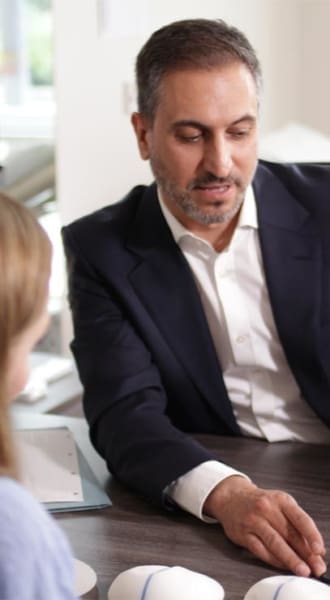
FAQs
What is the best age to have face lift surgery?
The ideal age for a facelift varies, but it’s typically considered when signs of ageing, like sagging skin and wrinkles, become more prominent. However, the decision should be based on individual concerns and consultation with a plastic surgeon.
How long does a facelift last?
Facelift results can last around 7 to 10 years or more, but the duration varies depending on surgical techniques, genetics, and lifestyle. The ageing process continues, and some individuals may choose touch-up procedures or non-surgical treatments to maintain their desired appearance.
Is a facelift a safe cosmetic surgery?
Facelift surgery is generally safe when performed by a qualified, specialist plastic surgeon in an accredited facility. While there are risks, such as infection and scarring, serious complications are rare. Following the surgeon’s instructions pre and post-surgery is crucial for a safe and successful outcome.
Does facelift surgery remove excess fat, excess skin, sagging skin and loose skin in the facial area?
Yes, facelift surgery is specifically designed to address excess sagging, and loose skin on the face and neck. During the procedure, a plastic surgeon removes the surplus skin and tightens the underlying facial tissues and muscles, resulting in a firmer and more youthful appearance. Facelift surgery effectively reduces sagging skin, helping patients achieve a rejuvenated and refreshed look.
What is deep plane facelift surgery?
A deep plane facelift is an advanced surgical technique that repositions deeper facial tissues and muscles, providing a more thorough and longer-lasting improvement in sagging skin, jowls, and mid-face drooping. This technique is Mr Ridha’s preferred method.
Does a facelift include a neck lift?
A traditional facelift primarily addresses the lower two-thirds of the face, such as the cheeks and jawline, and the neck.
Access essential resources & information at your convenience.
Browse our collection of brochures, guides, and forms to learn more about our procedures, prepare for your visit, or explore your options. Simply download what you need to get started.

Facelift & Necklift Patient Leaflet





